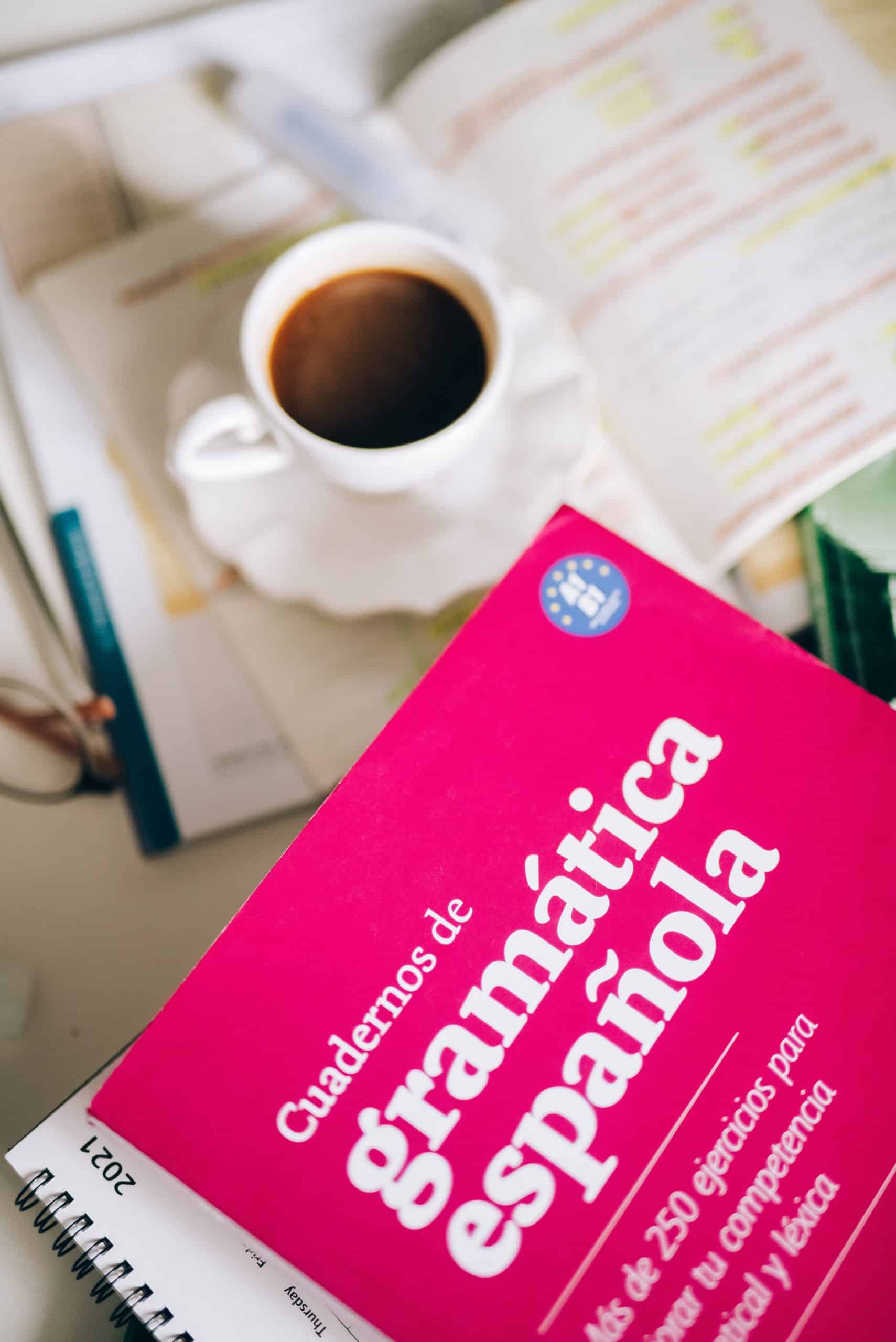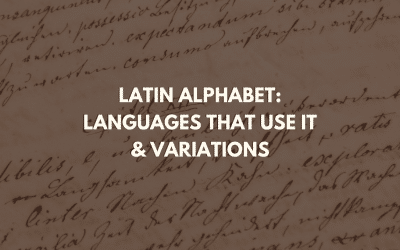Portuguese vs Spanish : Are they similar or different?
With a history dating back to the 9th century, Portuguese and Spanish are two important Romance Languages that originated in Europe. Having their roots in Latin, both languages were initially restricted to the Iberian peninsula where they had limited speakers.
Thanks to colonialism, Spanish and Portuguese today have a profound influence beyond Europe to much of Latin America and Africa. In fact, it’s right to say that, post-colonial countries are the major flag-bearers of these languages today.
Portuguese and Spanish are two languages that have a lot in common, yet are distinctly different from each other. However, a lot of people make the mistake of assuming that both languages are near identical. But that is far from true. In fact, native speakers of each language detest spoken to in the other.
What are the similarities between Portuguese and Spanish?how are they different? We will try to understand these and more as we progress.
Are you looking for Spanish and Portuguese Translation Services?
Milestone helps you seamlessly translate content & localize your website, products, and services for more reach, better conversions, and greater sales.
Portuguese vs Spanish: Number of Speakers
Spanish
- With more than 493 million native speakers, Spanish is the second most-spoken native language in the world.
- It stands second only to Mandarin and is ahead of English in the number of native speakers.
- An additional 75 million people consider Spanish a second language.
- Spanish is also the third most taught language in the world, right behind English and French.
- It’s the most spoken language in Latin America
Portuguese
- Portuguese has close to 250 million native speakers.
- The language occupies the position of the seventh most spoken language in the world.
- Close to 28 million people consider it their second language.
- It is also one of the most taught languages in the world.
Also read: 10 Fascinating Facts About Spanish
Where are Spanish and Portuguese languages spoken?
Though both Spanish and Portuguese have their origins in Europe, these languages are today native languages for much of Latin America and Africa. In fact, there are more speakers in Latin America than there are in Spain or Portugal. Let’s look at Spanish vs Portuguese in terms of regions where they speak the language.
Spanish
Spanish is the official language of Spain, Puerto Rico, and 19 other countries. These include Argentina, Bolivia, Chile, Colombia, Costa Rica, Cuba, Dominican Republic, Ecuador, El Salvador, Equatorial Guinea, Guatemala, Honduras, Mexico, Nicaragua, Panama, Paraguay, Peru, Uruguay, and Venezuela.
Though not the official language, a large Hispanic community in the United States considers Spanish as their first language. These 45 million people account for nearly 13% of the US population. This makes the US the second-largest Spanish-speaking country, right behind Mexico.
Also read: The Prevalence of the Spanish Language Within the US
Portuguese
Portuguese is the official language of Portugal and 9 other countries and territories. These include Angola, Brazil, Cape Verde, East Timor, Equatorial Guinea, Guinea-Bissau, Mozambique, Macau, and São Tomé and Príncipe.
Brazil has the largest population of Portuguese speakers at 209 million. This is more than 20 times the number of speakers in Portugal. Interestingly, there are some subtle differences between Brazilian Portuguese and European Portuguese.
Also read: Portuguese eCommerce Translation for Brazil
Evolution of the Languages
The Spanish vs Portuguese picture looks a lot similar when we examine the history of both these languages. Belonging to the Indo-European family of languages, they evolved from certain dialects of Vulgar Latin from the 7th and 8th centuries.
The roots of these languages can be traced back to the Roman Empire which brought Latin to the Iberian Peninsula in the 3rd century BC.
The invasion of the Arabic Moors was a turning point in the evolution of the modern forms of both languages. A form of Arabic remained the official language till the 13th century. Both Spanish and Portuguese today have considerable words borrowed from Arabic.
After the region was recaptured from the Arabs by the Kingdom of Asturias, these languages underwent significant standardization. Multiple dialects emerged out of which Spanish and Portuguese became dominant.
Spain and Portugal were both important colonial powers. Their colonial conquests brought the two languages to parts of Latin America and Africa. These post-colonial countries continue to be the major speakers of both languages today.
Also Read: Spanish Localization: Should You Localize into LA or European Spanish?
Are Spanish and Portuguese mutually intelligible?
The written forms of Spanish and Portuguese are mutually intelligible. However, mutual intelligibility reduces considerably in the spoken form. This stems primarily from differences in pronunciation, grammar, and vocabulary.
Mutual intelligibility, therefore, stands only at about 50% in both directions. However, Portuguese speakers are found to understand Spanish conversations better than the other way round. This is largely due to the more complex grammatical structure of Portuguese in comparison to Spanish.
Script
Both Portuguese and Spanish use the Latin script. The spelling of both languages is largely phonemic in contrast to other languages like English. This means that the pronunciation corresponds to the spelling of words in both languages.
The written script of Spanish and Portuguese look very similar. In fact, the written form is largely mutually intelligible for readers.
- English – How are you?
- Portuguese – Como você está
- Spanish – ¿Cómo estás?
However, this mutual intelligibility in the written form does not mean that the languages are near identical.
Also read: Language vs Dialect vs Accent – What Is The Difference?
Common Words in Spanish & Portuguese
- Portuguese and Spanish have a lexical similarity of almost 90%. This means that both languages have words that are found in equivalent forms.
- The 2 languages have a high proportion of cognates, which are words that have the same roots and correspond to each other.
- Much of the vocabulary is shared.
- A significant proportion of words in each language can be derived from the other using simple transformations.
Here is a list of words and phrases and their corresponding Spanish and Portuguese forms.
False friends
Though both languages share a lot of cognates, oftentimes these cognates are deceptive. This is an interesting aspect of the Portuguese vs Spanish discourse.
False friends or false cognates are words that look and sound the same, yet have different meanings. Spanish and Portuguese have a lot of false cognates that make it often confusing for the outsider.
Here are some common false cognates.
- The word exquisita means “exquisite” or “delicious” in Spanish. On the other hand, esquisita means “weird” in Portuguese.
- Barata means “cheap” in Spanish, while it means “cockroach” in Portuguese
- Embaraçada, in Portuguese means “embarrassed”, while the Spanish embarazada means “pregnant”.
Connect With Spanish and Portuguese Customers in their language
Milestone helps you seamlessly translate content & localize your website, products, and services for more reach, better conversions, and greater sales.
Pronunciation
Though the amount of lexical overlap is high between the 2 languages, sounds make all the difference. Pronunciation of similar-looking words is largely different.
Portuguese has often been compared to Russian in terms of its sound. Spanish in contrast, is described as being smoother.
Here are some common differences in pronunciation.
- The letter ‘s’ at the end of a word is pronounced as ‘sh’ in Portuguese like in ‘ship’ and ‘s’ in Spanish like in ‘snake’.
- The sounds b,d, and g are pronounced softer in Spanish
- In Portuguese ‘b’ and ‘v’ sounds exist and they correspond to the respective letters. However, in Spanish, only the ‘b’ sound exists, regardless of whether it’s written ‘b’ or ‘v’.
Grammatical Structure
Spanish and Portuguese have lots of similarities and differences in grammar. Let’s look at some of them.
Is Portuguese similar to Spanish?
- Both languages have nouns classified into two genders. The form of adjectives changes according to the gender of the noun.
- The languages also have two forms for the verb ‘to be’- ser/estar. The usage of these two different forms is also similar.
Differences between Portuguese and Spanish
- In Spanish, ‘Yo’ and ‘Me’ are two first-person singular pronouns used to address yourself. However, in Portuguese, there is only one such pronoun – ‘Eu’.
- In Spanish, the word ‘muy’ is used before adverbs and adjectives and ‘mucho’ is used before nouns to denote the English meaning ‘very’ or ‘much’. In Portuguese there is only one word ‘muito’, to be used for all word forms.
- While Spanish has only 5 vowels, Portuguese has more core vowels and nasalized vowels.
Also read: 8 Ways To Overcome Multilingual Translation Challenges As A Translator
Global Relevance
Portuguese and Spanish are two important global languages spoken by a large proportion of the world.
Both Spanish and Portuguese are economically powerful languages. The total GDP of all Spanish-speaking regions adds up to a whopping $2.6 trillion.
Besides, the growing Hispanic community in the United States means that Spanish has lots to offer to the world’s largest economy.
Portuguese-speaking regions are not behind Spain in this respect. Brazil which has the largest number of speakers is also the ninth-largest economy in the world and an emerging economic power. Much of Portuguese-speaking countries are resource-rich.
Also read: Top Languages Spoken In California
Spanish and Portuguese are important global political and diplomatic languages. Spanish is one of the 6 official languages of the United Nations.
Both languages are official languages of the European Union, the Organization of American States, the Union of South American Nations, the Community of Latin American and the Caribbean States, the African Union, and several other organizations.
Perhaps no other field gives Spanish and Portuguese as much soft power as football. From the classic rivalry between Argentina and Brazil to the Spanish league, Portuguese and Spanish have managed to capture the hearts of football fans across the world.
Spanish cultural power has been steadily increasing lately with the arrival of movies and series like Money Heist and Dark Desire.
From La Tomatina to bullfighting and the Brazilian carnival, both languages have found immense global popularity thanks to the culture of these regions.
The Spanish vs Portuguese discourse has interesting dimensions to it. While both of these are sister languages or ‘cognate’ languages, they are far from identical.
Are you planning on expanding your business to Spanish and Portuguese-speaking regions?
Get in touch with us for translations, localization and consulting.
Also read: Localization & Translation Costs – Breakdown Of Factors Involved
Connect With Spanish and Portuguese Customers In Their Language
Milestone helps you seamlessly translate content & localize your website, products, and services for more reach, better conversions, and greater sales.









